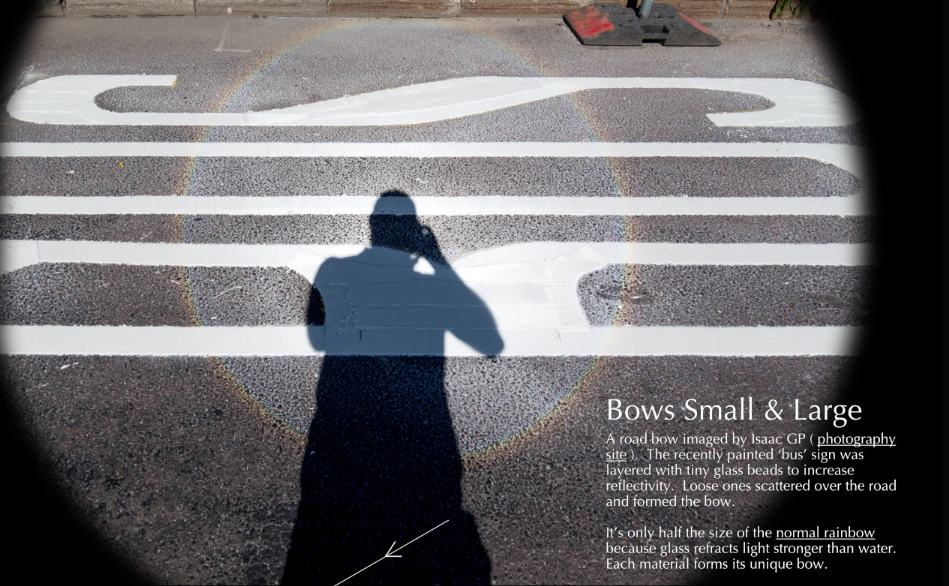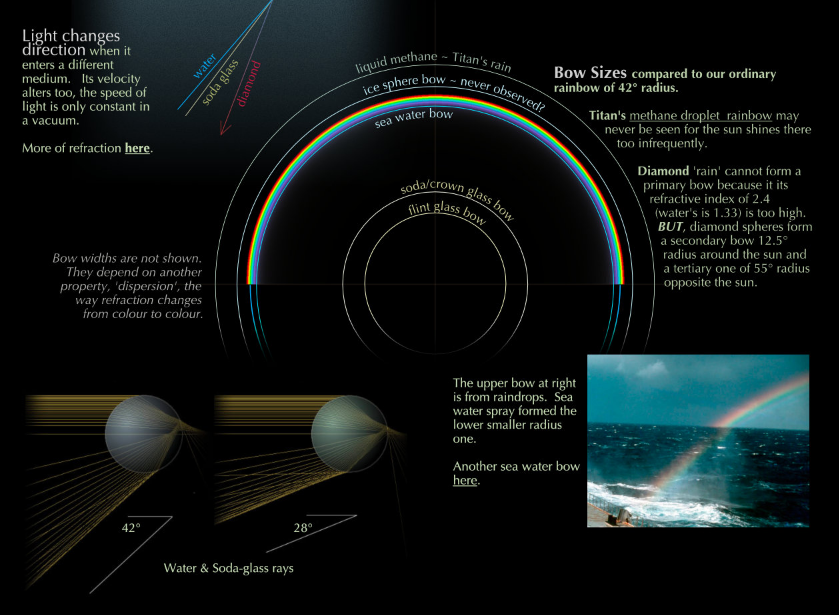Glass bead bow
Exploring the Glass Bead Bow Phenomenon
Have you ever seen a glass bead bow? It's a fascinating optical phenomenon that occurs when light interacts with tiny glass beads. While most of us are familiar with the vibrant colors of a traditional rainbow, glass bead bows offer a unique twist on this natural wonder. In this article, we will delve into the world of glass bead bows and uncover the science behind their formation.
Glass Bead Bows: A Smaller, But Equally Stunning, Sibling of Rainbows
Glass bead bows are smaller in size compared to traditional rainbows. This is because glass has a higher refractive index than water, causing light to refract more strongly when passing through it. As a result, the bending of light is more pronounced, leading to a reduction in the size of the bow.
It's important to note that each material has its own distinct bow. While rainbows are formed by the refraction and reflection of sunlight through water droplets, glass bead bows arise from the interaction between light and glass beads. This distinction highlights the diverse range of atmospheric optics phenomena that exist in our natural world.
The Dance of Light and Refraction
To understand the formation of glass bead bows, we must first explore the concept of refraction. When light passes from one medium to another, such as from air to glass, it changes direction and velocity. The speed of light remains constant in a vacuum, but in different mediums, refraction alters its path. This change in direction is what creates the mesmerizing display of colors in a glass bead bow.
Dispersion: Unveiling the Spectrum of Colors
The width of a bow is not solely determined by the medium it interacts with but also by another property called dispersion. Dispersion refers to how refraction varies across different colors. Each color of light bends at a slightly different angle as it passes through a medium, resulting in the separation of colors we observe in a bow.
It's fascinating to compare the sizes of glass bead bows with our familiar rainbows. While a typical rainbow has a radius of 42°, glass bead bows exhibit their own unique dimensions. These variations provide a glimpse into the intricate nature of atmospheric optics and the diverse ways in which light interacts with different materials.
Beyond Glass Beads: Other Intriguing Bow Formations
While glass bead bows captivate our attention, there are other captivating bow formations worth exploring. For instance, on Saturn's moon Titan, methane droplets may create their own rainbow-like displays. However, due to the infrequent presence of sunlight on Titan's surface, these methane droplet rainbows may remain unseen by human eyes.
Diamonds, known for their exquisite beauty, also have their role to play in atmospheric optics. While diamond "rain" cannot form a primary bow due to its high refractive index, diamond spheres can contribute to the formation of secondary and tertiary bows. These additional bows appear at specific angles around the sun and offer further intrigue for those studying atmospheric phenomena.
A Symphony of Bows: Sea Water Spray and Raindrops
Nature never fails to surprise us with its intricate creations. In the case of glass bead bows, they are not the only ones to grace our skies. Sea water spray and raindrops also play a part in forming captivating bows. The interaction between sunlight and sea water spray gives rise to lower, smaller radius bows, while raindrops contribute to the formation of upper bows.
In conclusion, glass bead bows offer a unique perspective on the wonders of atmospheric optics. As we explore the science behind these captivating phenomena, we discover the diverse ways in which light interacts with different materials. From the smaller size of glass bead bows to the dispersion of colors, each aspect adds to our understanding of the intricate dance between light and matter. So, keep your eyes open and marvel at the beauty that can be found in the most unexpected places.

Bows Small & Large
A road bow imaged by Isaac GP (photography site). The recently painted 'bus' sign was layered with tiny glass beads to increase reflectivity. Loose ones scattered over the road and formed the bow.
It's only half the size of the normal rainbow because glass refracts light stronger than water.
Each material forms its unique bow.

Light changes direction when it enters a different medium. Its velocity alters too, the speed of
light is only constant in a vacuum.
More of refraction here.
Bow widths are not shown. They depend on another property, 'dispersion', the way refraction changes from colour to colour.
Bow Sizes compared to our ordinary rainbow of 42° radius.
Titan's methane droplet rainbow may never be seen for the sun shines there too infrequently.
Diamond 'rain' cannot form a primary bow because it its refractive index of 2.4 (water's is 1.33) is too high. BUT, diamond spheres form a secondary bow 12.5° radius around the sun and a tertiary one of 55° radius opposite the sun.
The upper bow at right is from raindrops. Sea water spray formed the lower smaller radius one.
Another sea water bow here.

Note: this article has been automatically converted from the old site and may not appear as intended. You can find the original article here.
Reference Atmospheric Optics
If you use any of the definitions, information, or data presented on Atmospheric Optics, please copy the link or reference below to properly credit us as the reference source. Thank you!
-
<a href="https://atoptics.co.uk/blog/glass-bead-bow/">Glass bead bow </a>
-
"Glass bead bow ". Atmospheric Optics. Accessed on November 26, 2024. https://atoptics.co.uk/blog/glass-bead-bow/.
-
"Glass bead bow ". Atmospheric Optics, https://atoptics.co.uk/blog/glass-bead-bow/. Accessed 26 November, 2024
-
Glass bead bow . Atmospheric Optics. Retrieved from https://atoptics.co.uk/blog/glass-bead-bow/.